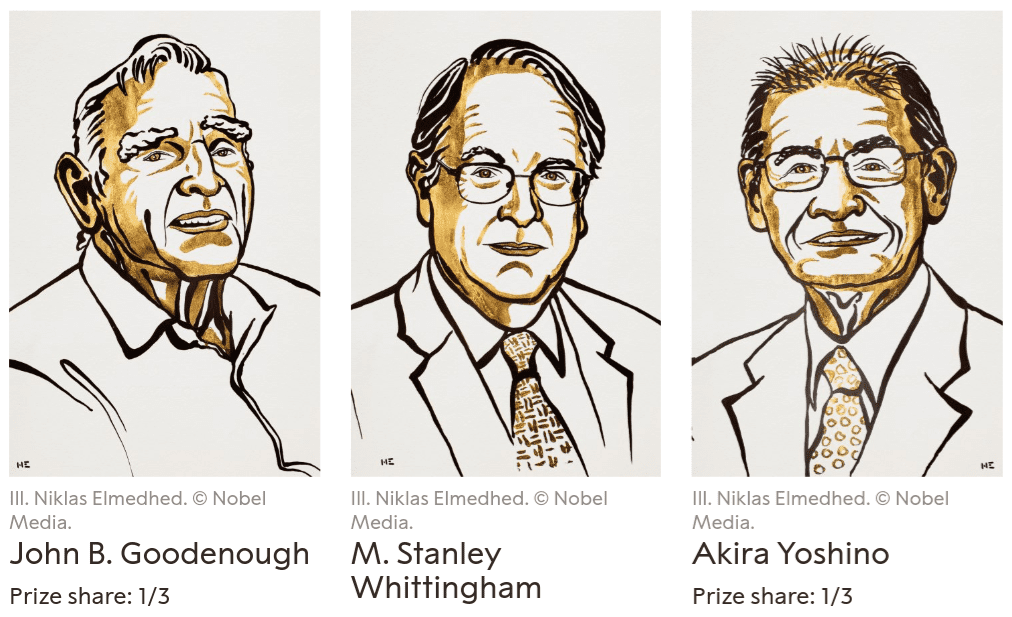The Royal Swedish Academy of Sciences has decided to jointly award the Nobel Prize in Chemistry 2019 to John B. Goodenough, M. Stanley Whittingham (USA), and Akira Yoshino (Japan) “for the development of lithium-ion batteries“.

This year’s Nobel Prize for Chemistry recognizes the importance of the lithium-ion battery in today’s world. Such batteries are lightweight, rechargeable, and powerful enough for a wide range of applications. From mobile phones to laptops and electronic cars, the lithium-ion battery keeps our world in motion. They’re also one of the cornerstones of fossil-fuel-free economies, as they’re able to store energy from renewable sources for long stretches at a time (they can withstand many recharge-discharge cycles).
No breaking down
The advantage of lithium-ion batteries is that they are not based upon chemical reactions that break down the electrodes, but upon lithium ions flowing back and forth between the anode and cathode.
Lithium-ion batteries have revolutionized our lives since they first entered the market in 1991. They have laid the foundation of a wireless, fossil-fuel-free society, and are of the greatest benefit to humankind.
The lithium-ion battery can trace its origin back to the oil crisis of the 1970s, the commission explained. Against this backdrop, a researcher named Stanley Whittingham was working to develop energy technologies that would not depend on the use of fossil fuels. His work with superconductors paved the way for the development of an innovative cathode for lithium batteries. This cathode was built from titanium disulfide which, at a molecular level, has spaces that can fit – intercalate – lithium ions. Today, the concept is known as electrode intercalation.
The anode in a Li-Ion battery (the positively-charged part) is made of metallic lithium, which is a strong electron donor. Coupled with the new cathode, such a battery could produce just over two volts of power, which is a lot. However, this battery was also very unstable, as metallic lithium is highly reactive — and it posed a real risk of explosion.
John Goodenough predicted that replacing the titanium disulfide in the cathode with a metal oxide would boost the battery’s capacity (measured in volts) to even greater heights — a hypothesis he proved in 1980 using cobalt oxide. His battery produced up to four volts, paving the way towards much more powerful batteries.
Akira Yoshino built on Goodenough’s findings to produce the first commercially viable lithium-ion battery in 1985. He replaced the lithium in its anode with petroleum coke, a carbon-based material that could intercalate lithium ions. The resulting battery was a lightweight, robust battery that could withstand hundreds of cycles without any drop in performance. The secret to their success is that they don’t rely on chemical reactions to generate power (these break down electrodes over time) but on the physical flow of lithium ions between the anode and cathode.
Lithium-ion batteries have revolutionized our lives since they became commercially-available in 1991. Whenever you poke at your phone, hit the power button on your laptop, or start your Tesla, know that the work of these three laureates made it possible.









